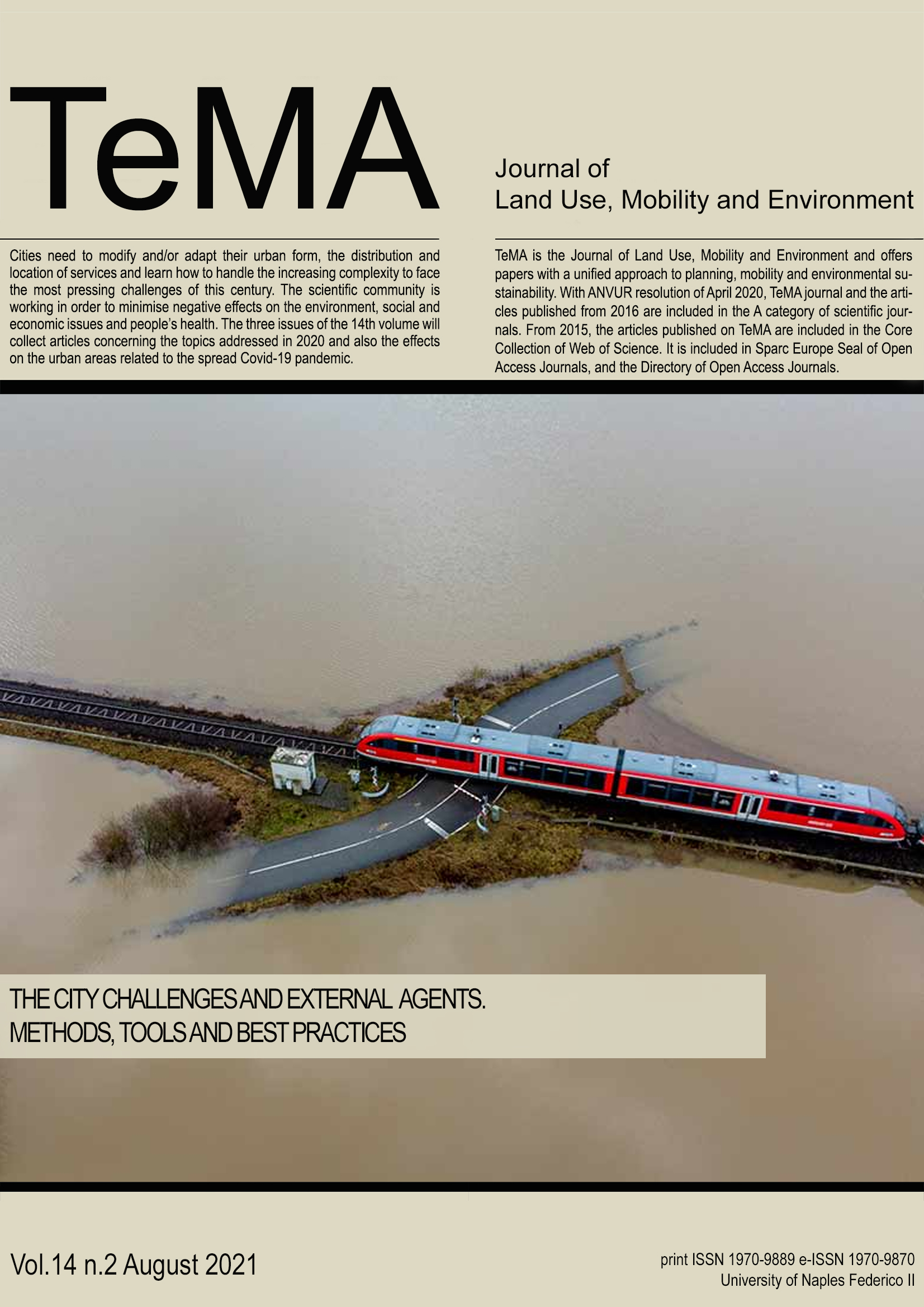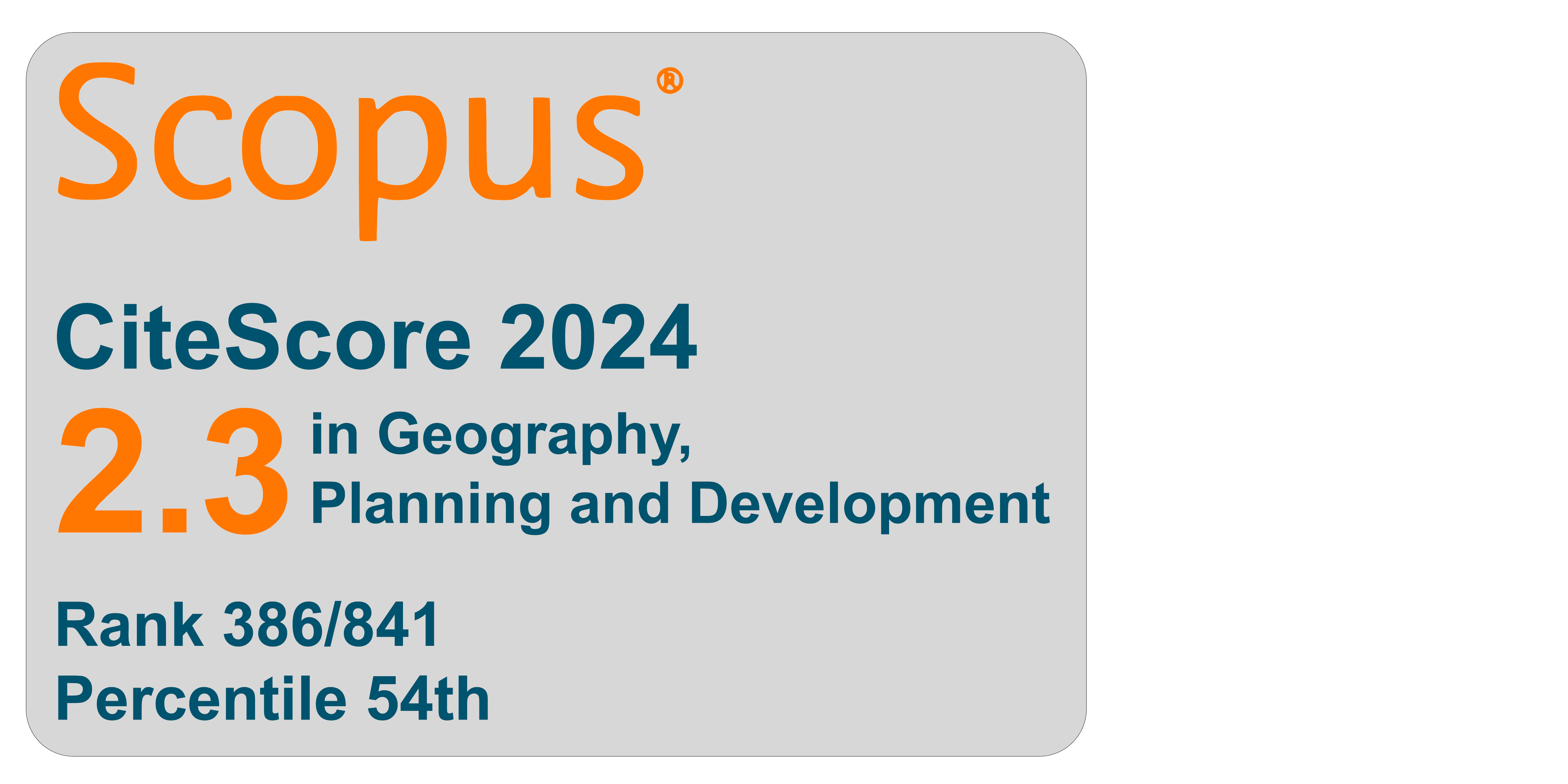Estimation of the future land cover using Corine Land Cover data
DOI:
https://doi.org/10.6093/1970-9870/7671Keywords:
Quantitative estimation, Effect of urbanization, Land cover change, Linear and polynomial functions, Corine land cover dataAbstract
In this study, linear and polynomial regression functions were applied to the Corine Land Cover (CLC) data to quantitatively estimate the future land cover for three different cities of Turkey, Ankara, Istanbul and Izmir. For the related cities, the CLC data sets recorded for every 6 years between the years 2000-2018 were individually obtained from satellite images for monitoring changes in land cover for Turkey. These data allow us to have information about artificial surfaces, agricultural areas, natural and semi-natural areas, wetland and water bodies which have been changed accordingly urbanization process in Turkey. Based on CLC data of 2000, 2006, 2012 and 2018 the areas and widths of artificial surfaces spread in these three cities were determined. Mathematical calculations were made by using the linear and polynomial regression models to understand what the future scenarios would be in order to understand what would happen if these changes continued in the same way. To conclude, revealing the possible scenarios in the future will provide important outputs for land cover and will contribute to the development of urban planning and the creation of sustainable cities.
Downloads
Downloads
Published
How to Cite
Issue
Section
License



